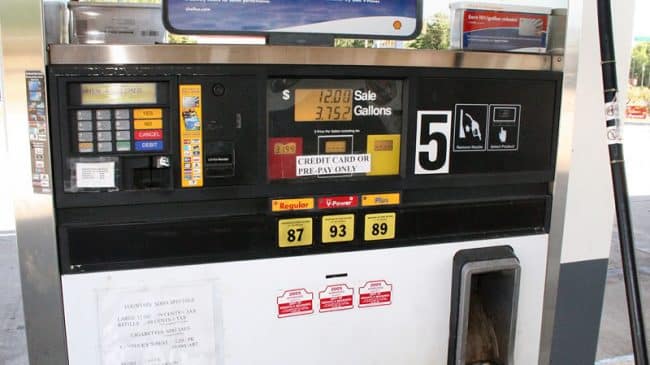The October issue of Public Works Financing provides this year’s annual recap of the growth of the global public-private partnership (P3) infrastructure industry. And what a track record that is. Since Public Works Financing Editor Bill Reinhardt began tracking this emerging industry in 1985, companies and their financial backers have invested just over $100 billion for 102 U.S. and Canadian P3 transportation infrastructure projects.
In the United States alone, the past 12 months saw financial closings for $9 billion worth of transportation mega-projects: the LaGuardia Airport central Terminal ($5.2 billion), Maryland’s Purple Line ($2.65 billion), and Texas’s SH 288 toll road ($1.07 billion). And Canada closed deals for $3.7 billion worth of transit and motorway projects.
Worldwide, P3 developers and financiers reached financial close on 30 major projects worth $30 billion over the past 12 months. These include seven new toll roads in Colombia (worth $6.4 billion) along with other toll roads in Chile, France, and Mexico. That global total includes four new rail projects, ten non-tolled motorways in Canada, Germany, Ireland, Netherlands, and Slovakia, one seaport (Jamaica), and three airports, in Chile, Japan, and the U.S. (LaGuardia).
The fact that transportation infrastructure projects of this magnitude are welcomed by global infrastructure investment funds, and that a growing cadre of developer/operators is eagerly seeking such deal flow, are still not widely understood. Most elected officials still think in terms of traditional design-bid-build procurement, and think they must fund new transportation infrastructure out of annual tax revenue—as opposed to using long-term financing based on dedicated revenue streams.
So the P3 infrastructure community still has a lot of work to do to raise the level of awareness of what this important phenomenon can do, not only to increase infrastructure investment but to produce better-justified projects that add real value to our economy. To that end, here are some thoughts to consider.
Don’t support simply throwing money at the problem.
Transportation mega-projects worldwide have a terrible track record of cost overruns, late completion, and shortfalls in traffic and revenue. Our community should be outspoken in support of real benefit-cost analysis to decide if a project is worth doing, followed by a Value for Money analysis to see if it is better done as a long-term P3 concession.
Requiring mega-projects to pass these screening tests will help to avoid the China syndrome, under which the majority of that country’s transportation mega-projects have been found to be value-destroying.
Emphasize the long-term benefits of P3 concessions.
Opponents still beat the drum for the government to come up with a fixed design and then select the company that can build it for lowest cost. We now have solid evidence that the incentives of a concession company that will design, build, operate, and maintain a project for 30 to 50 years are to (a) innovate in the design, (b) build it to minimize life-cycle cost, and (c) guarantee proper long-term maintenance. This is a powerful set of benefits that is still poorly understood by many.
Address the “foreign takeover” argument.
Public Works Financing has shown that non-U.S. companies still constitute 33 of the world’s top 34 transportation P3 developers. This stems from the fact that until recently the United States had no private-sector toll roads or airports—the expertise and track record is nearly all with companies that have been doing such ventures in the private sector for decades (Australia, France, and Spain in particular).
It’s good to see many recent U.S. and Canadian competitions for P3 projects being contested by teams that include leading U.S. firms, and their participation will continue to grow as the U.S. deal flow expands. But the other side of this coin is the identity of the infrastructure funds that finance transportation mega-projects, by putting in equity and debt. The latest tally from Infrastructure Investor finds that 52.5 percent of the top 30 infrastructure funds are U.S. and Canadian, with another 25.7 percent being Australian. There is nothing sinister about these funds investing in U.S. airport, highway, and transit projects.
Recognize the limits of availability payment concessions.
State governments are beginning to understand that availability payment (AP) deals create long-term liabilities on their balance sheets, and in most cases get counted against the state’s debt limit. So the idea that AP concessions are the wave of the future is misleading. Since airport and highway mega-projects can be and are being financed based on user-fee revenue streams, it would be prudent for states to reserve their limited AP capacity for projects without bondable user-fee revenues. (In fact, of all the highway P3 projects listed on PWF’s U.S.-Canada Scorecard, the large majority (18) are revenue-risk, with just five as toll/AP hybrids and only six as pure AP concessions.)
Use highway and bridge P3s as a step toward mileage-based user fees.
Most state DOTs and the entire transportation research community now understand that we need to transition from per-gallon fuel taxes to per-mile charges as the primary funding system. Therefore, it makes good sense to use per-mile tolls as the financing basis for all new additions to the limited-access highway system (as Florida now does), and to do likewise with all replacements of major highways, bridges and tunnels, as they wear out.
When I speak at infrastructure finance conferences, the main complaint I hear is the lack of sufficient U.S. P3 deal flow. Funds that are investing in places like Colombia, Jamaica, Mexico, etc. would dearly love to do more under the protection of U.S. laws. The four projects highlighted as PWF’s likely 2017 pipeline total just $4.65 billion—a drop in the bucket compared with U.S. transportation infrastructure needs. So while we can celebrate this fledgling industry’s accomplishments so far, we have our work cut out for us to grow the size of the pie in the United States.

